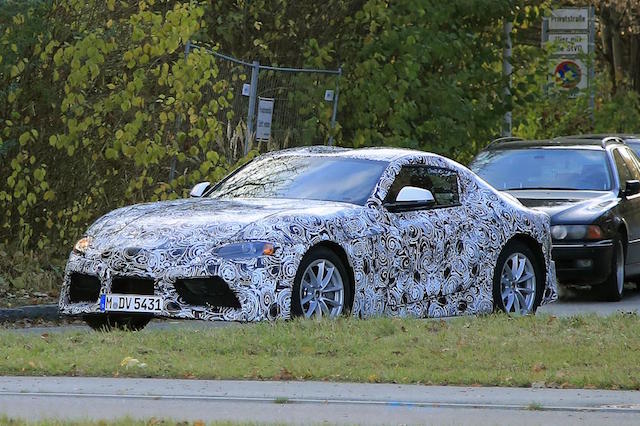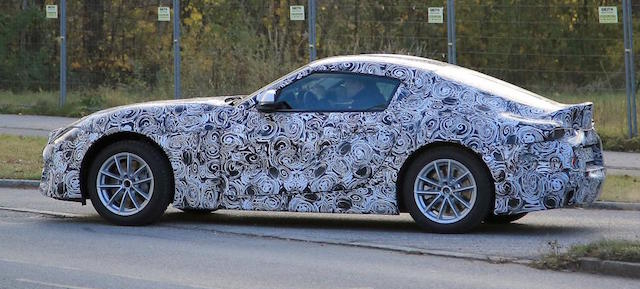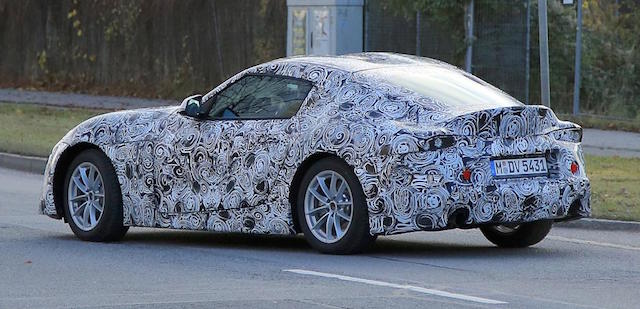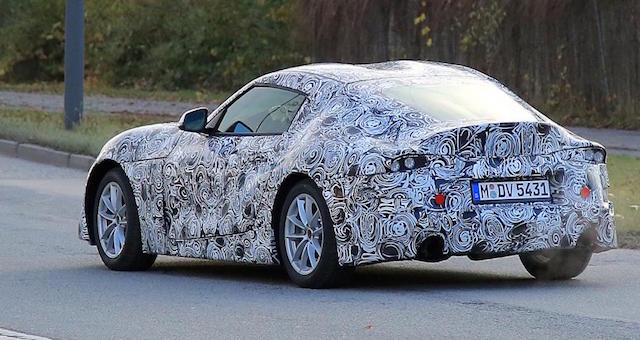
These spy pictures of the new Toyota Supra near Germany’s Nurburgring circuit are the best yet, showing plenty of production-ready bodywork under the camouflage. They also show designers have toned down some of the styling cues from the 2014 FT-1 concept.
The car here borrows the concept’s strong nose and its roof also carries the ‘twin bubble’ cues from the FT-1. The tail with rounded ducktail spoiler is also familiar. The design of the twin tail-lights sitting below the spoiler is a nod to the original Supra, and the two exhausts at each corner of the rear point to the current GT 86.
The new Supra coupe is expected in 2018 and is being developed with BMW under a joint venture signed in 2011 to work on hydrogen fuel cells, battery technology and a new sports car platform, among other projects.
Supra will share its platform with the German carmaker’s Z4 replacement, although the Supra will the bigger of the two. The new Z car will be a soft-top with a fabric roof, but the Supra is likely to be a hard-top only. Engine and transmission choices will also differ. Toyota is thought to be targeting a kerbweight of less than 1400kg.
That Supra might get a petrol/electric hybrid powertrain gained momentum when Toyota Europe president and CEO Johan van Zyl was asked by British media if Toyota’s quest to have a hybrid or plug-in hybrid vehicle in every market sector would extend to sports cars.
“I would imagine that in the future that will definitely happen,” van Zyl said. “We already have some sporting models with hybrid powertrains on the Lexus side. But on the Toyota side, I do not have any doubt whatsoever that in the longer-term future there will be a real Toyota sports model using electrification.”
Whatever Supra engine Toyota decides on, it is expected to come with hybrid-electric technology to boost performance. Such a model would have much in common with Toyota’s Le Mans race cars – electric motors on the front and rear axle, with a lithium-ion battery pack to store energy from regenerative braking, and a petrol engine driving the rear wheels.
The hybrid-electric system would be mated with with Toyota’s first-ever dual-clutch transmission, in place of the CVT gearboxes used in existing Toyota and Lexus hybrids. The last Supra went out of production in 2002.




